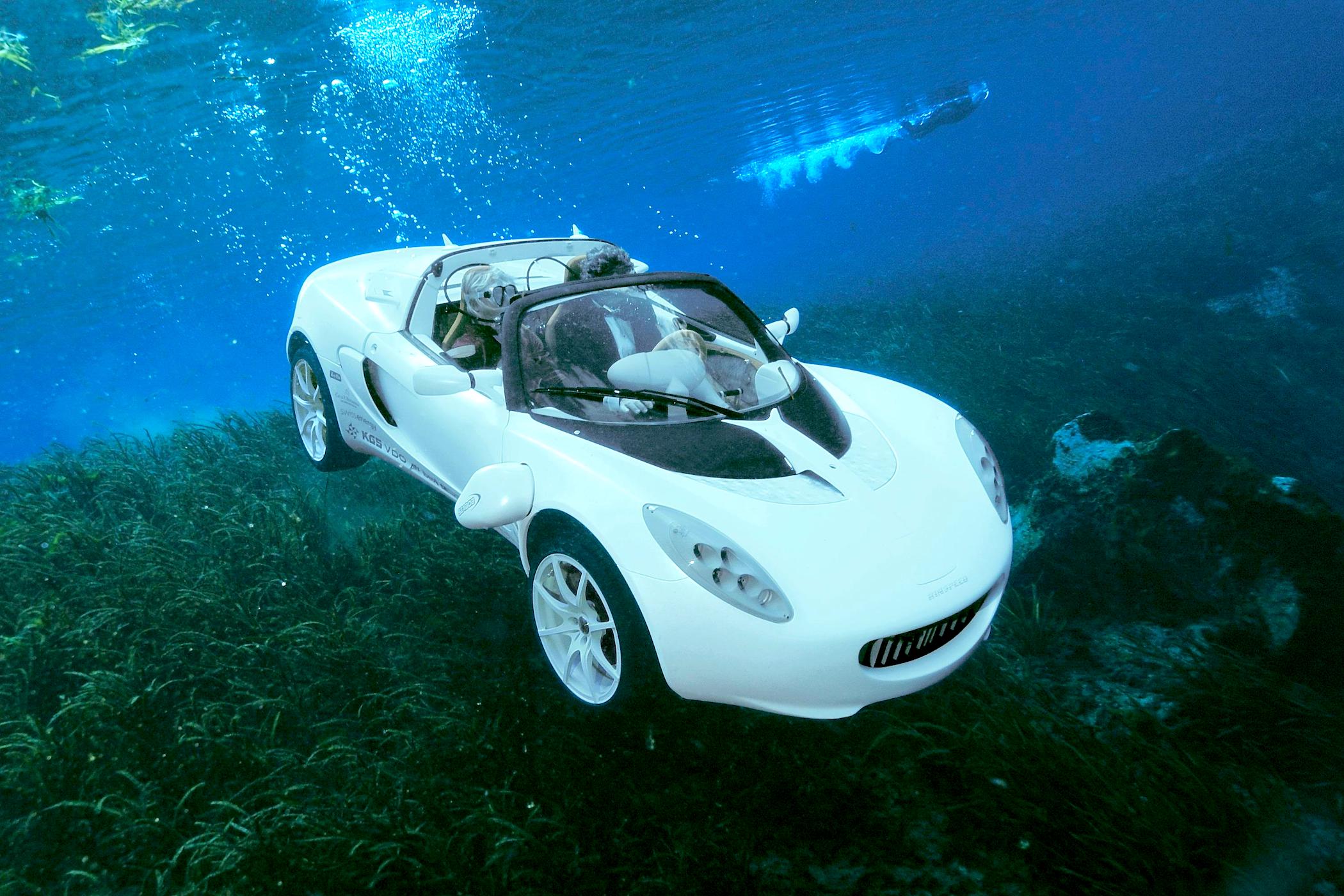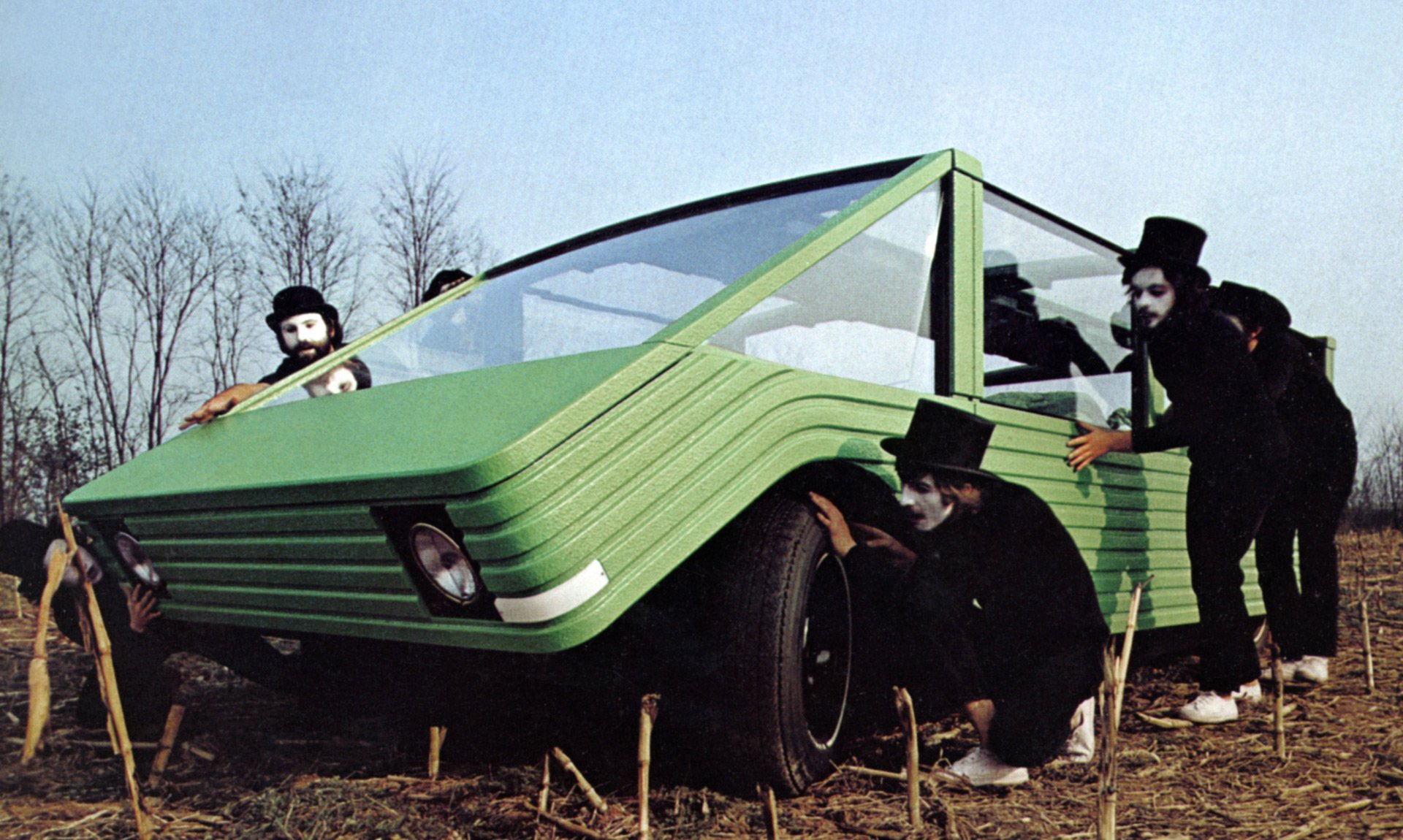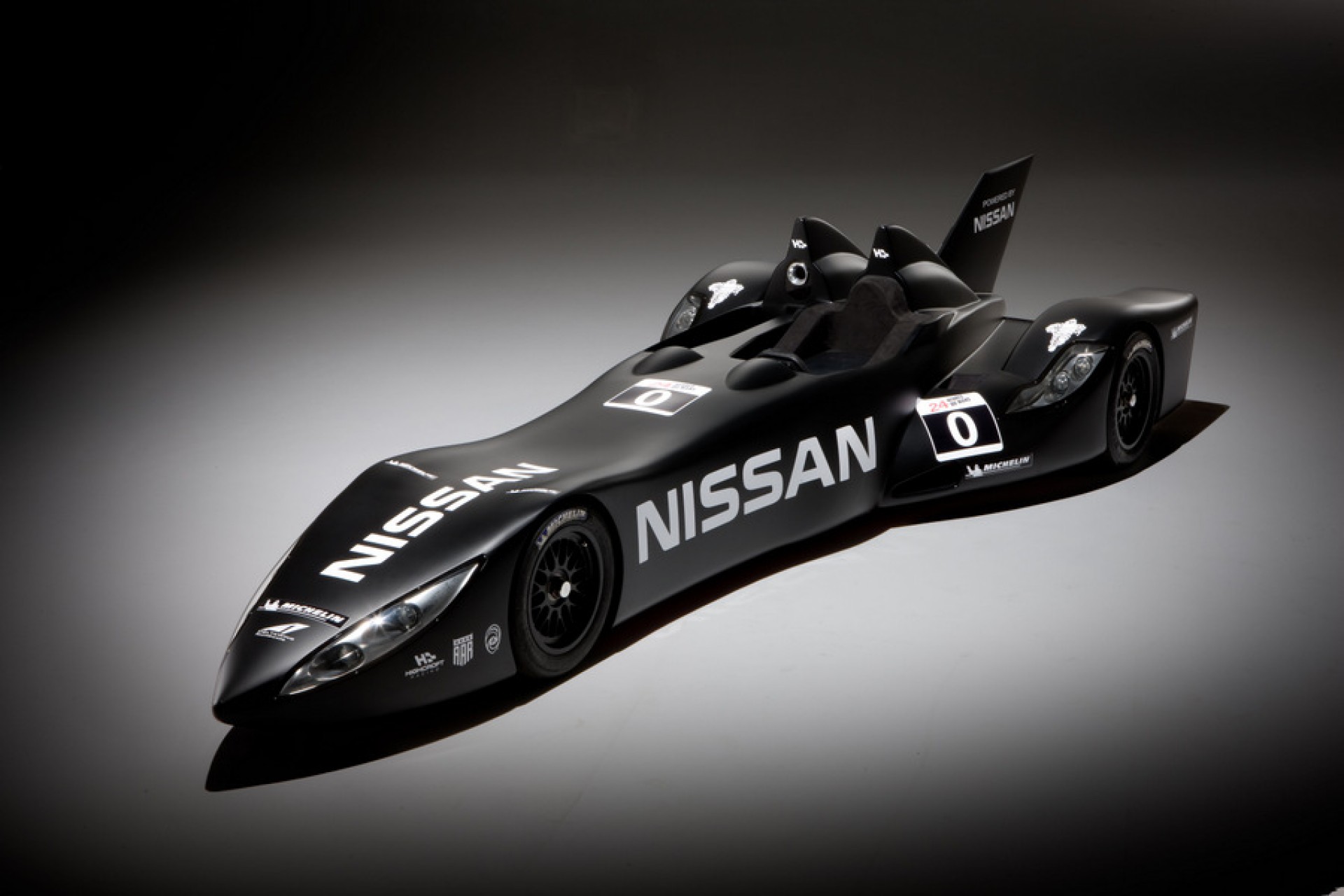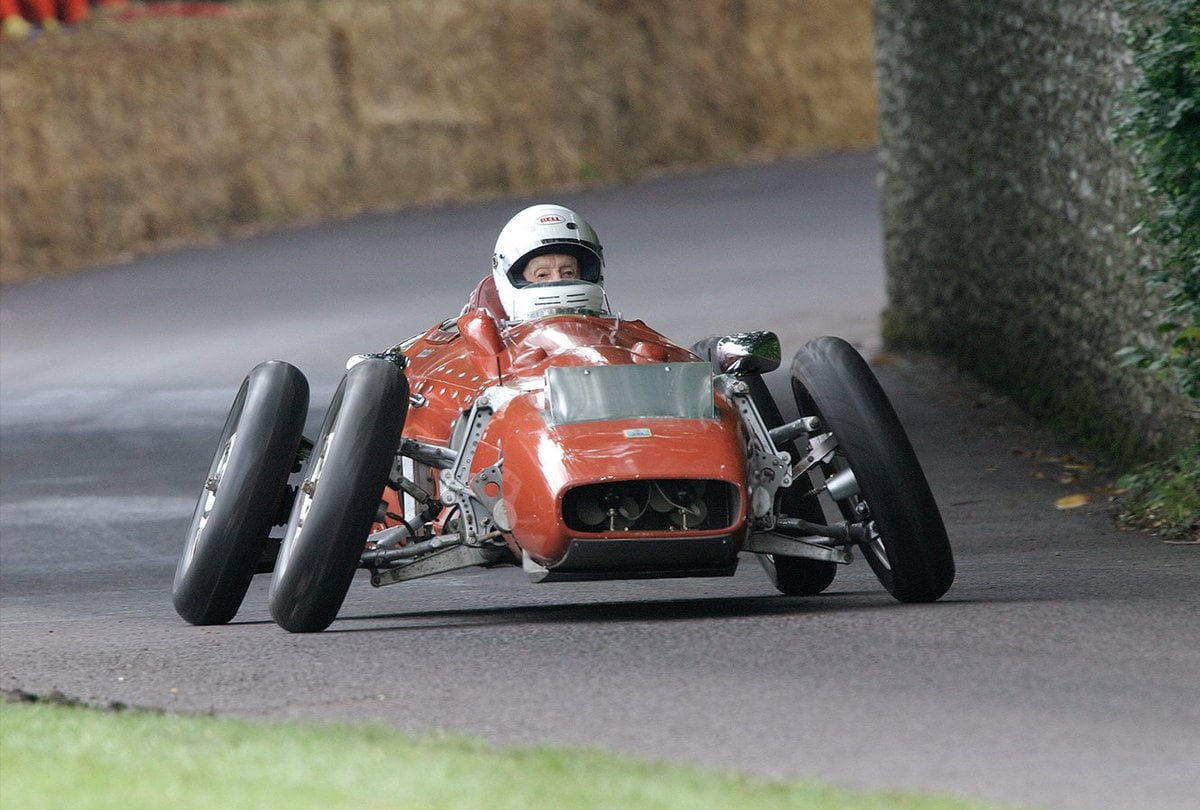Weird and Wonderful Automotive Innovations – Part 3
Certainly more ‘weird’ than ‘wonderful’ for some of them…

To complete the triptych of articles covering weird and wonderful innovations from the automotive world – part 1 and part 2 can be read here – once again we delve into history and uncover some amazing creations. After turbine engine cars or illuminated tires (yes, for real), The Petrolhead Corner tries to up the ante once more and deliver some curious machines that tried to hit… but missed.
It has been a lot of fun gathering these stories, learning and sharing unique vehicles in our weekly Petrolhead Corner. And yes, we will continue the stories but this is (for now) the final instalment dedicated to the weird and wonderful automotive innovations. And I think I have another interesting line-up for you, a mix of road cars, concepts and racing cars. But more later this year.
Citroen Kar-a-Sutra
Calling a car ‘Kar-a-Sutra’ undoubtedly raises a few eyebrows, and I must admit it sounds quite cheesy. And yes, I am kind of stretching the concept of a car here as this was a mock-up only and not a drivable machine like all the other entries in these three articles. As a concept vehicle though, it ticks all the boxes for weirdness and can even be regarded as something of a precursor to the MPV and many other expandable, shape-shifting concept vehicles.
The Citroën Kar-a-Sutra was a concept by architect Mario Bellini, Pirelli, Citroën and a furniture company and the latter seems quite obvious when looking at images of this thing. It was built for the 1972 MoMa exhibition, ‘Italy: The New Domestic Landscape’. The emphasis for the Citroën Kar-a-Sutra is on the interior of the vehicle. The idea is that the interior is more than just space for a number of people moving from point A to point B. It is intended as a temporary living space, barring any sanitary amenities though, but with reconfigurable seating which can be turned into a comfy, velvety lounge area.
The roof of the car is what makes this car so extraordinary, as it can be raised from 4 feet while driving to 7 feet while stationary. It featured ingenious sliding windows tucked into the body when lowered, sliding out to keep a confined space when raised.
Technically this is not an actual (concept) car as it cannot be driven but it is worth a mention as it predates what many consider the first MPV’s by well over a decade; the Renault Espace was introduced in 1984, over a decade later.
There’s very little additional information, but the Citroën Kar-a-Sutra is covered by Petrolicious and the architect himself is interviewed by DesignBoom.
Nissan DeltaWing
All entries on this list combine innovation with weirdness and this one is no different; the DeltaWing project. The initial idea was to have a very narrow front profile to reduce drag and increase efficiency in both engine development and aerodynamics. Combined with a lightweight build, the car would theoretically need a less powerful and thus less thirsty engine but still be able to run at a competitive pace. The project was first proposed as a new single-seater chassis for Indycar, but the Indycar organisers decided to run a more conservative chassis from Dallara instead.
The team of DeltaWing Technologies, who proposed the prototype to Indycar, turned it into a car that was eligible for the Le Mans 24 hours under the Garage 56 regulations, with the help of Nissan as a sponsor. These Garage 56 stipulations mean that each year a radical, innovative project has the chance to gather real endurance racing experience and test their project to the limit. Each Garage 56 entry is not eligible to win though, it is purely a test-programme for teams. In 2012 the roadster version was the first DeltaWing that entered the gruelling race. A 1.6-litre turbocharged inline-four pumped out about 300bhp, which at first doesn’t sound like much compared to the 1000hp LMP1 cars. A big factor is weight and drag though and the Nissan DeltaWing weighed in at under 500kg without a driver and was thus able to run quite impressive lap times. Despite looking very promising on paper and backing up its potential on track, six hours into the race it was shunted off track and into a wall by another car and was out of competition.
Two years later, the DeltaWing project was back at Le Mans but now as a coupe, and labelled it the ZEOD RC (Zero Emissions on Demand Racing Car). It had a hybrid-electric powertrain with a 400bhp turbocharged 1.5-litre engine and an electric engine developing 295bhp. In its first lap into the race, it reached 300 kilometres an hour on electric power alone, a very impressive achievement! A gearbox issue sadly meant another retirement for the DeltaWing. For more information on these cars go to DriveTribe.com.
Brooks Walker ‘Fifth Wheel’ system
You think parking assistance is a modern computer-assisted invention? Oh no, it really isn’t! It was first conceived in the 1930s by a man called Brooks Walker. Patented in 1932 and first shown to the public a year later, this specific innovation cannot be credited to a single car or brand as it was designed as an aftermarket installation. It is quite interesting to see though. And despite mayor efforts by Mr Walker it never caught the imagination of US carmakers. It is basically a very early, very rudimentary form of parking assistance we know today.
It basically consists of a trunk-mounted fifth wheel, mounted perpendicular to the other wheels and lowered by a mechanical or hydraulic arm. You would pull up to a parking space, turn in the nose of the car, lower the fifth wheel which would then pull in the back end of the car into the parking spot. Really rather ingenious, and quite a funny thing to behold.
The upside is it requires less space to park in comparison to regular parallel parking, the downside being it took up all available trunk space. The system never caught on despite all efforts, even into the 1950s. Back then it was marketed as an extra use for a spare wheel and was constructed in such a way it could be fitted to just about any trunk. Walker installed the kit on a 1953 Packard with a continental kit (spare wheel outside of the trunk) to free up the trunk again. You can see it in action here:
More information on this innovative system on Hagerty.com
Milliken Camber-Car
One of the mysteries of setting up a race car is the positioning of a car’s wheels. Wheelbase, track width, positive or negative camber, toe-in or toe-out; it all greatly influences the dynamics of a race car. It also should be adjusted according to the conditions a car is run in, as a rally car requires a completely different set-up than, let’s say, an F1 car. It affects wear, grip, braking, acceleration, aerodynamic flow, all very scientific stuff.
To explore various cambers for a car, legendary engineer Bill Milliken developed the Milliken MX-1 “Camber-car”. The car was developed with the idea to adjust camber positions and learn what the influences of various set-ups have on handling and driving capabilities. It featured a tubular chassis, with multiple mounting points for the suspension resulting in a set-up anywhere between 0 and 50 degrees of camber.
Power came from a two-stroke six-cylinder engine, producing 80bhp. No real performance figures are specified but that is not what the car was intended for. Basically constructed as two motorbikes leaning in, it had difficulty running in a straight line until some adjustments were made. When all issues were sorted out, the car cornered at remarkable speeds, proving the concept to an extent. The Milliken MX-1 was tested for a number of years but made its first public appearance at the 2002 Goodwood Festival of Speed. Bill Milliken, 91 years of age at the time, piloted the car up the Hillclimb-course. There’s a short very low-quality clip available on YouTube where you see the car in motion but that’s it.
Rinspeed sQuba
Arguably one of the best car scenes in a movie is from the 1977 James Bond movie The Spy Who Loved Me. Mr Bond is pursued by some bad guys in his white Lotus Esprit. After the perilous chase, he reaches the end of the road and drives his car off a pier. You’d think it would be the end of him, but no. Turns out the car is a submarine! After fending off more thugs underwater, he eventually drives out of the water, onto a beach, lowers a window, drops a fish and drives off!
The car used in the underwater scene is a second Lotus Esprit, converted to be a fully working submarine. Despite what the movie suggests, the road car did not convert into the submarine. There is only one car I know of that can pull off that stunt in real life; the Rinspeed sQuba! As the name sort of suggests it is an actual scuba-diving car, based on a Lotus Elise (a white one, as a nod to the Esprit).
Rinspeed is a Swiss company which has been building some of the wildest, innovative concept cars for over 40 years. The sQuba stands out though, as I believe it still is the only truly submersible car in existence. From a technical perspective, it is a very complicated thing to do. The solution was to make it electrically driven. From the outside, only a set of propellers are visible underneath the rear of the car and a pod on either side for under-water control. The interior is clad in water-resistant material and all instruments are designed to provide information for both driving and diving the car. A pair of oxygen tanks are fitted with piping and masks allowing the drivers to breathe.
A ton of interest was shown when this car was launched, presented at the 2008 Geneva auto show but it never made it into production. The scalability of the prototype to a production-ready car is simply not there, with the concept car costing USD 1.5 million. More information on Rinspeed.com and Motor1.com. Also, check out this video of the car in action:
Covini C6W
Some say 2 wheels are better than 4, some say it the other way around, but few people join the conversation stating 6 wheels is the way to go. There are some very well-known cars featuring six wheels, especially amongst petrolheads. For instance the Tyrrel P34 and Williams FW08B, both featuring a double axel at the front (Tyrrell) or at the rear (Williams).
Regarding road cars, perhaps the completely bonkers Mercedes-AMG G63 6×6 comes to mind, or the Panther 6, but I would like to focus on the Covini C6W and the C6W Spider. Both these cars were constructed by Covini, an Italian company founded in 1978 which has built a number of prototypes over the years with this one being their whackiest. No doubt fitting an extra set of wheels to a car can be beneficial in some areas but in terms of looks, it is…. disturbing I guess.
The original idea for a six-wheeled car by Covini stems from the late 1970s, most likely following the impact of the Tyrrell P34 in F1 in 1976 and 1977, and the introduction of the Panther 6 in 1977. The Covini C6W (2004) and C6W Spider (2008) were developed with the idea that, much like the other six-wheelers, a larger contact patch in the front would help a car corner better and faster. It would also result in a bigger surface for the brakes, reducing wear and increasing braking capabilities. Also, when one front wheel suffers a puncture, the theory is the other wheels would balance it out so it would still be considered driveable.
A full carbon fibre body ensured a kerb weight of 1150kg, and powered by 434 horsepower 4.2 litre V8 from Audi, the top speed was a respectable 300 kilometres per hour. More details on this six-wheeled wonder on DriveTribe.





















